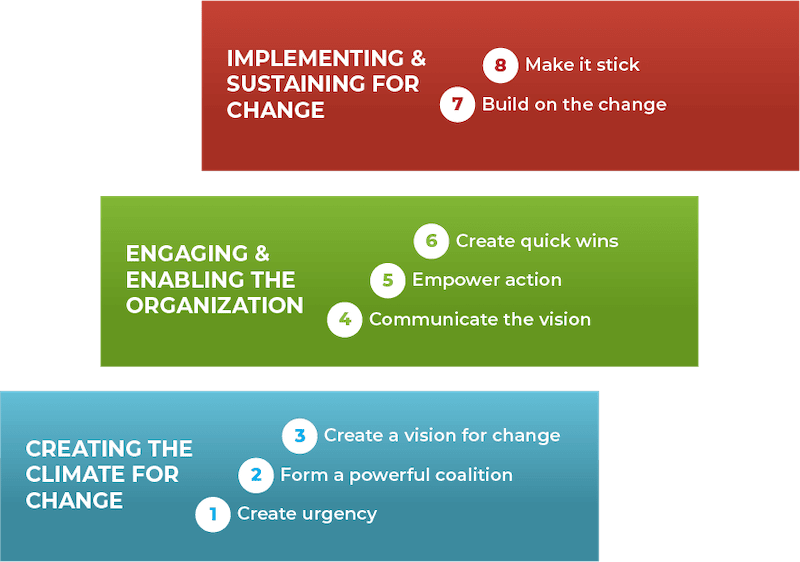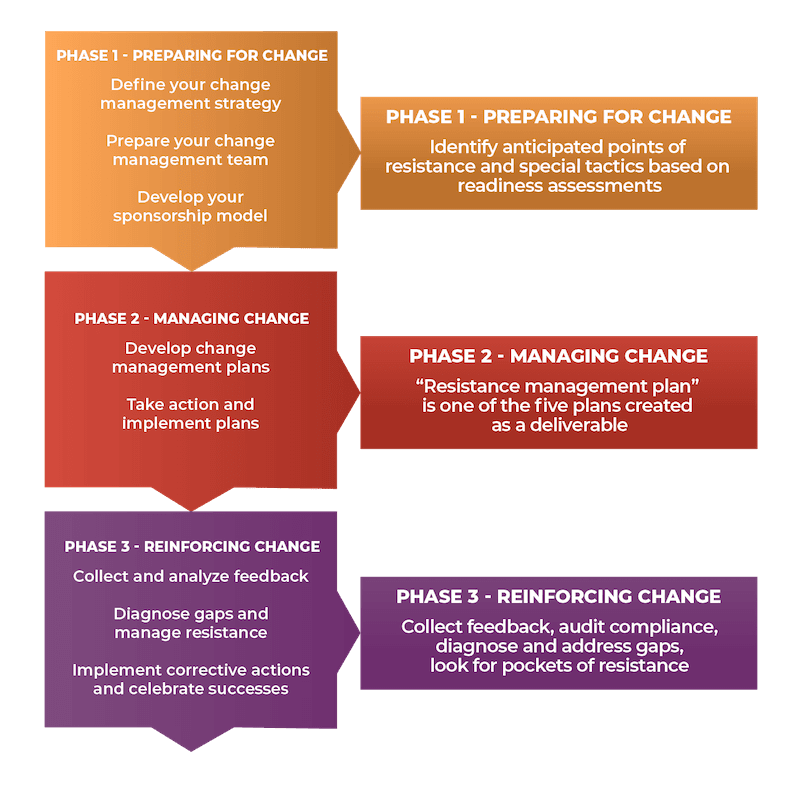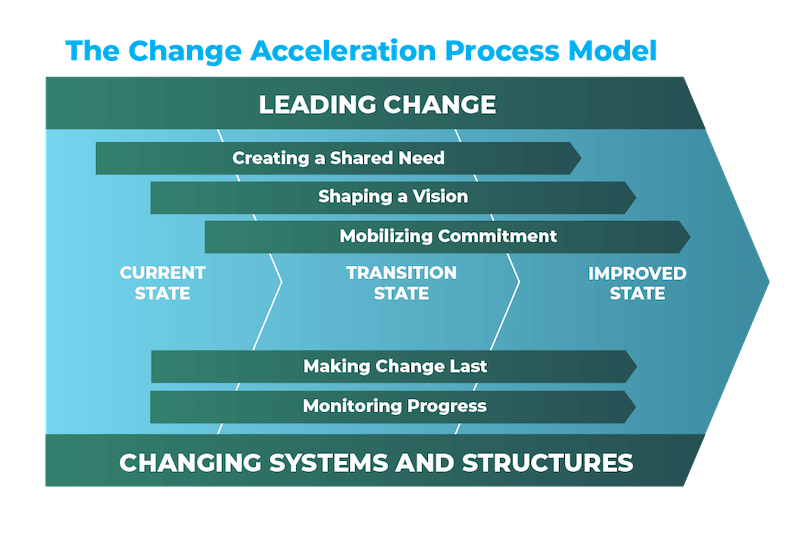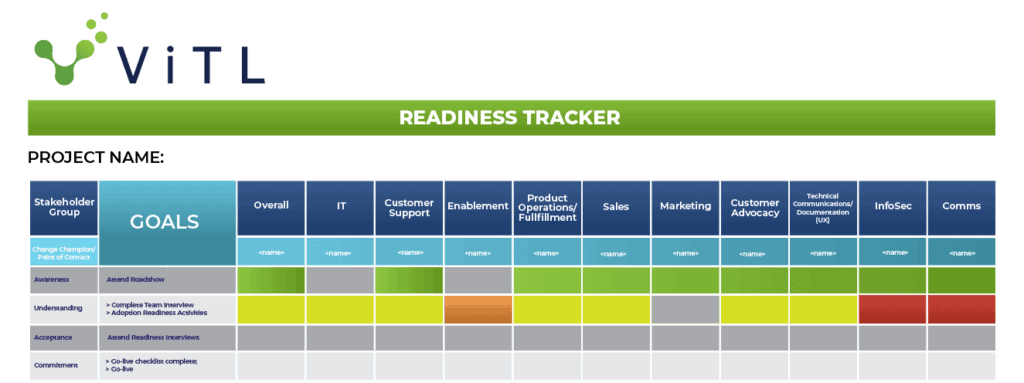Many change practitioners understand that change happens at an individual level. But what if you are implementing a change across thousands of individuals? How do you work with them through their change journey, at their pace, while at the same time, recognizing that you can’t work with each individual through the change? One way to do this is to articulate change journey phases that the stakeholder groups (identified in your mind mapping exercise ) can follow to ensure they are engaged and set up for successful change adoption.
There are many “pathways” and methodologies offered by change experts that provide a prescribed approach to organizational change management. For example, John Kotter outlines the following approach to change management.

Prosci outlines the following:

And the GE Change Acceleration Process outlines their steps as follows:

While all of these methods and processes are helpful elements in a change practitioner’s “toolkit,” and it is important to understand at a macro level the activities needed to implement change, the people who are navigating through the change need a more micro process. What is the tactical lens by which to look at the components of the models above? How do you actually go about…
- Engaging and enabling the organization,
- Managing organizational change and
- Mobilizing Commitment?
At ViTL, we answer this question by deploying our four-step approach to guide groups through their change journey. These steps include:
- Awareness – facilitate a roadshow or townhall presentation to provide awareness about the change. Be clear with attendees what the change is, when it is happening, who’s involved/impacted, and who should they contact for with questions or concerns. Allow open Q&A to start understanding the “areas of resistance” from the group.
- Understanding – conduct deep dive interviews with specific functional groups to understand, from their perspective, the level of impact to their teams and outline exactly what they need to ensure buy in and adoption. These interviews are another venue for impacted stakeholders to articulate more personal and directed WIIFM (what’s in it for me) considerations and for the implementation/change team to help impacted stakeholders understand the “why” behind for the change. During the interviews, teams may pose different questions that need to be addressed, but can also be included in an overall FAQ, or they specify different artifacts (e.g., ‘commercial’ vs. technical demos/presentations, knowledge articles, step action guides) needed to support different business areas. Teams may also identify different timelines for when they need certain materials. By having this open and transparent bi-directional dialogue with them, they will better understand the need for the change and the level of effort it will take to make the change happen. They will also likely expose their concerns so that you can address those accordingly. You’ll want to outline and track these activities in an overall change plan. Additionally, you’ll want to track who you’ve had interviews with to ensure all the stakeholders’ needs are addressed.
- Acceptance – conduct monthly readiness reviews and track attendance and participation. These readiness reviews will go through any updates of the change initiative from a broad perspective and allow round-table bi-directional dialogue between the project team each of the functional area liaisons regarding their readiness state. As time progresses with a change initiative, more information is discovered and conveyed. This new information may introduce new change adoption areas to address. Keeping an open and regular dialogue with the cross-functional teams is imperative to successful change.
- Commitment – work with the cross functional teams to complete a go-live checklist. Review the go-live checklist regularly and establish a formal go/no-go 1 month, 1 week, and 1 day prior to the change (note: if you have a cascading, phased, or agile change management, you can create go-live checklists specifically to those stakeholders who are changing at those different intervals). Additionally, tracking go-live participation helps to identify those groups with whom you may need to provide more direct follow up.
It’s important to track and publish the progression of the stakeholder groups’ journeys. Each change journey may be different for the different groups; they may have different needs and different timelines. What may be defined as “adoption readiness activities” for one group may not align with those needed for another group. That’s ok. This tracker will ensure you are addressing each team’s needs at a pace that works for them.

By outlining the users’ journeys and creating an open and transparent bi-directional dialogue, you create an environment that ensures you meet people where they are on the change adoption spectrum and you get ahead of any change resistance.



